Princess Diana 'knew what she was doing' during iconic minefield walk
Over two decades ago, Diana, Princess of Wales walked alone through an active minefield in the war-torn country of Angola, remotely detonating one of the deadly weapons as the world’s press watched.
“One down, 17 million to go,” she said.
![Diana, Princess of Wales wearing protective body armour and a visor visits a landmine minefield being cleared by the charity The HALO Trust in Huambo, Angola, in January 1997 [Photo: Getty]](https://s.yimg.com/ny/api/res/1.2/horpGjLS3P.r7wot_Cflyg--/YXBwaWQ9aGlnaGxhbmRlcjt3PTk2MDtoPTYyMw--/https://media-mbst-pub-ue1.s3.amazonaws.com/creatr-uploaded-images/2019-09/a55fa570-de11-11e9-8d5d-abcc355320ca)
The year was 1997 and although her marriage to Prince Charles was officially over and she was no longer a member of the Royal Family, Diana’s status as a global icon endured.
When British charity The HALO Trust (Hazardous Area Life-Support Organisation) invited her to visit the landmine region in southern Africa and highlight their work clearing landmines, she agreed.
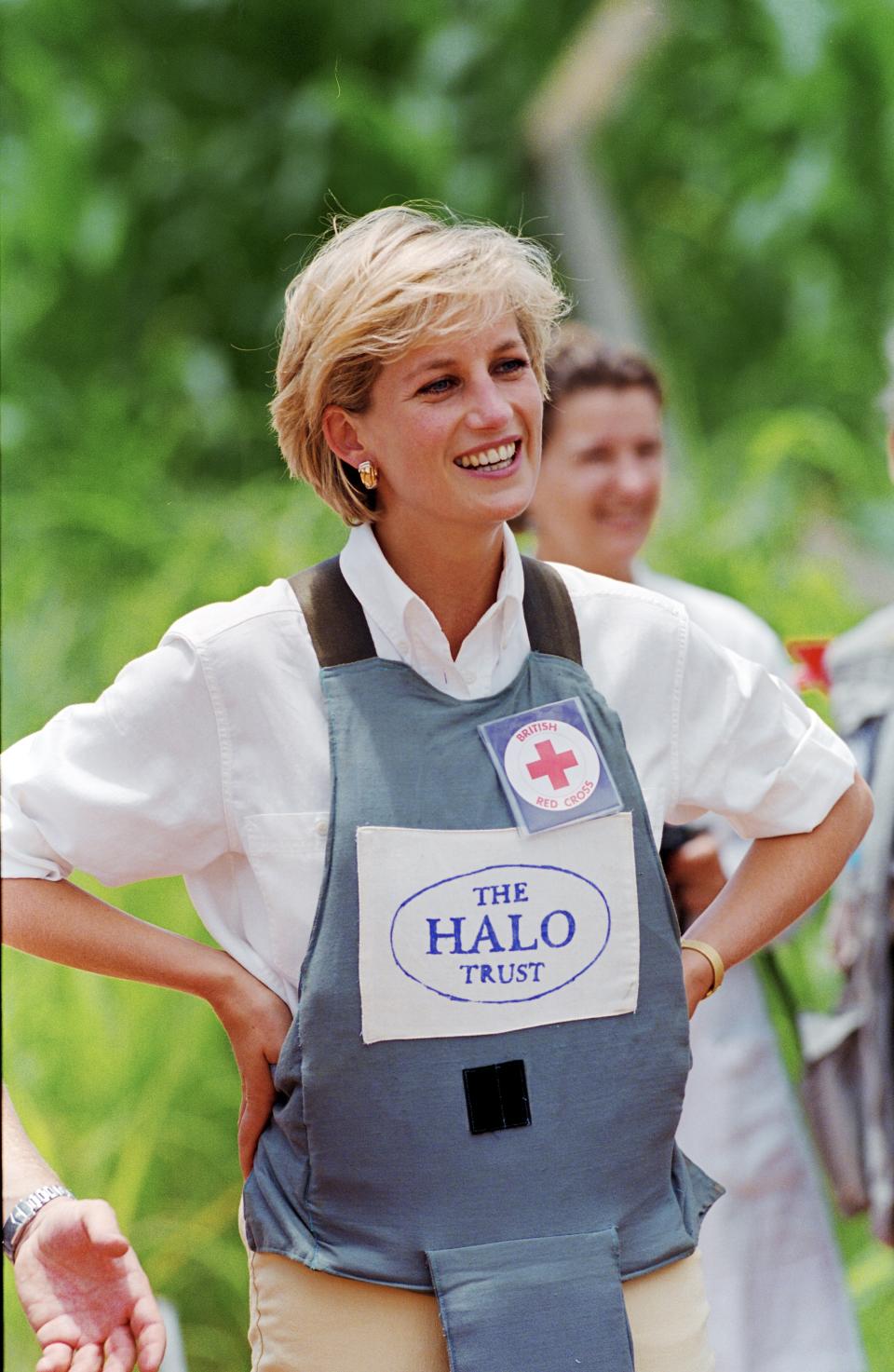
She had been horrified to learn of the indiscriminate nature of the weapons which often killed and maimed children and she was determined to use her popularity and influence to support the cause.
Dickie Arbiter, who was the Queen’s press secretary at the time, remembers the Princess’s trip vividly.
“With that one iconic image of her walking through that field, Diana set everyone thinking about the issue of landmines,” he says.
“It was so typical of her. She acted on instinct. We’d already seen her shaking hands with HIV patients and touching people with leprosy, debunking the myth that these people were ‘not to be touched’.
The trip to Angola was the same – she highlighted the landmines issue in one fell swoop.
“The Royal Family never give any reaction to what other members do but the reaction from the public, and particularly ex-military who had seen colleagues injured by these landmines, was powerful.
“She knew what she was doing.”
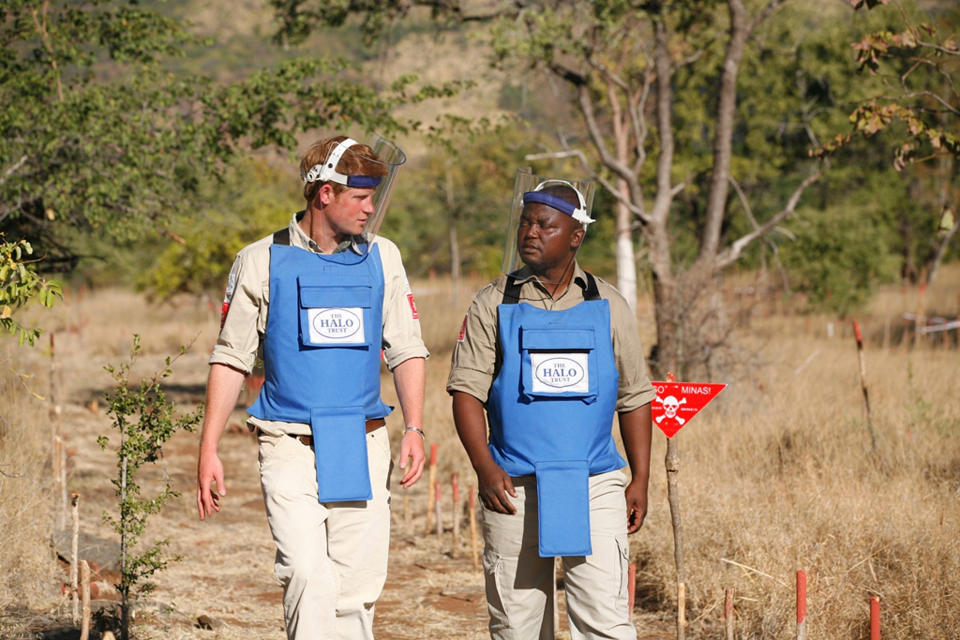
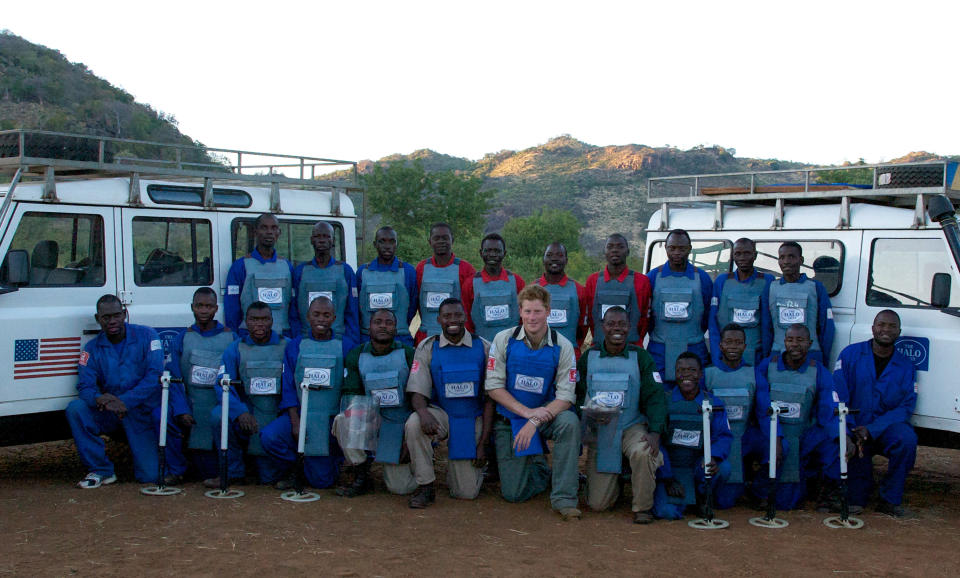
On Friday, as Patron of HALO, Diana’s son Prince Harry will visit Angola as well. He will spend the night at the organisation’s de-mining camp and, like his mother, remotely detonate a mine.
Says Dickie: “Harry will not be following in his mother’s footsteps literally and it’s wise for him not to recreate that famous picture.
“People will always try to compare the two. But as an ex-serviceman, he’s already aware of the damage of landmines and he’s going there in his own right.”
Back in 1997, when asked why the issue of landmine clearance was important to her, Diana told the press: “I’d read the statistics that Angola has the highest percentage of amputees anywhere in the world… that one person in every 333 had lost a limb, most of them through land mine explosions.”
In January of that year, she travelled to the city of Huambo in the country where a vicious civil war had been raging since 1975.
The HALO Trust had been working to demine the country for three years. Despite their heroic efforts, only 30,000 mines had been removed. The issue was simply not on the world’s radar. That was to change dramatically with Diana’s visit.
Thousands of landmines littered the area. In Huambo alone they caused 30 casualties a month and after the war ended in 2002, it was estimated that 15 million had been laid.
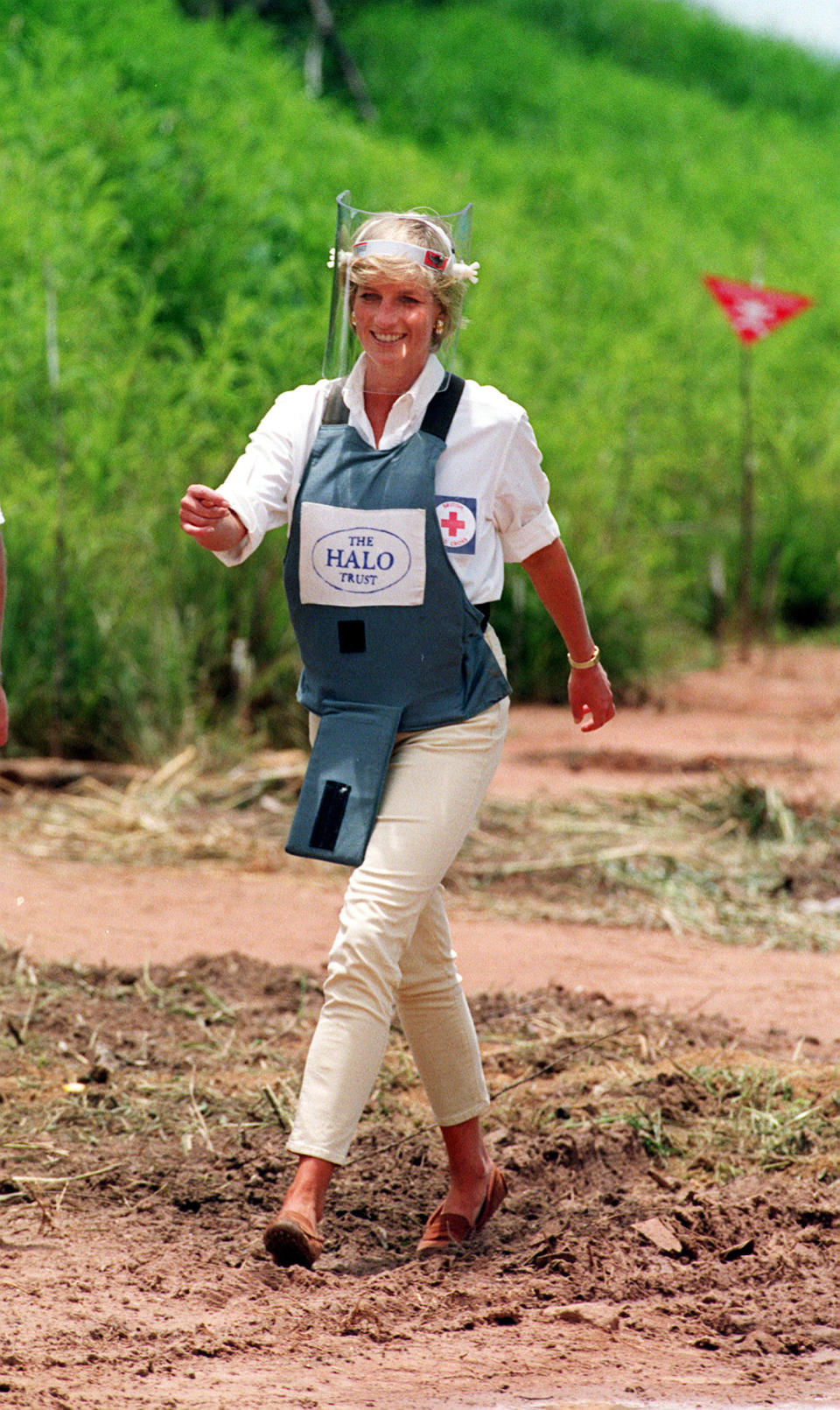
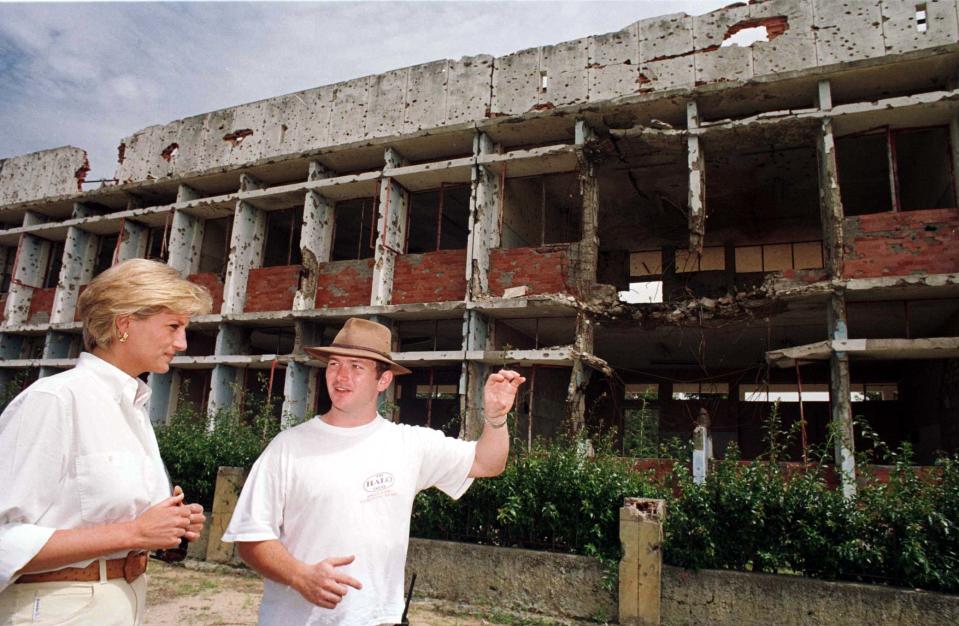
Paul Heslop, the landmine removal expert who helped the Princess adjust her safety gear remembers the tension day.
“She wasn’t making eye contact and I felt that initially she was disinterested,” he said.
“Then when a whole mob of journalists came off the other planes, I suddenly realised why she was so nervous. This poor woman was about to go into a live minefield, a dangerous area, in front of however many hundreds of millions or billions of people on the news.”
One of the British charity workers with the Princess at the time joked: “Don’t touch anything shiny” which seemed to help relieve the tension.
Later, she met several victims of the landmines, many young children who had lost limbs in the explosions. As a mother to the young princes William and Harry she was clearly moved by the experience.
The people of Huambo however were slightly bemused, not least by the pack of 90 journalists who followed Diana wherever she went.
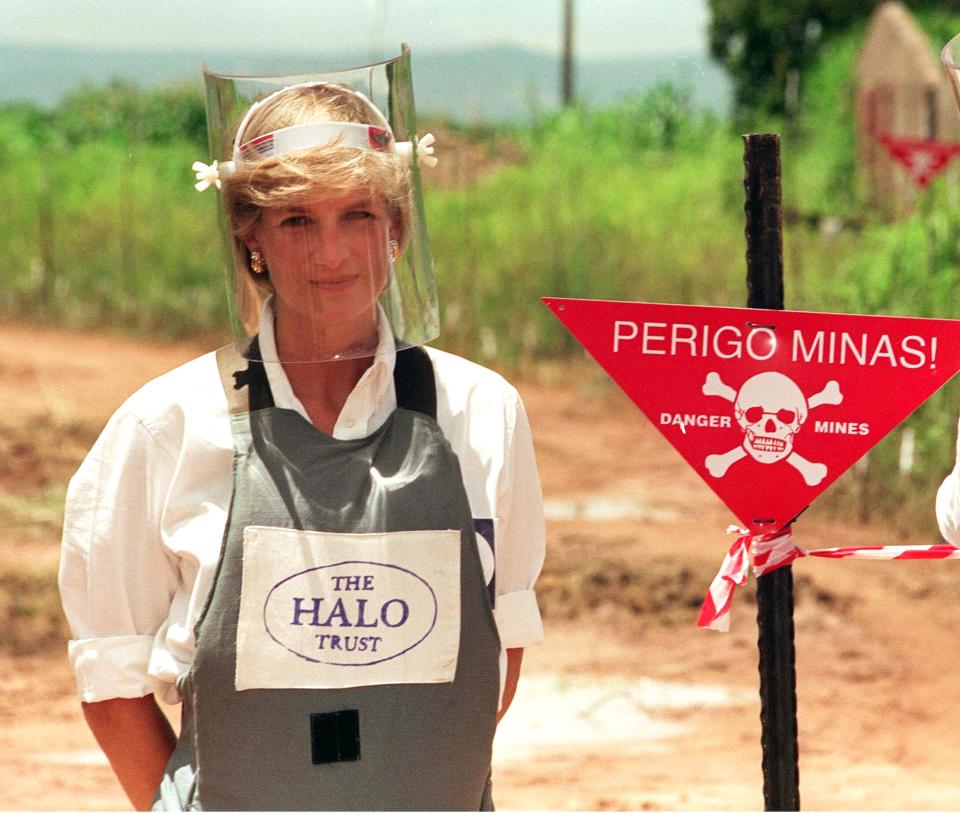
Diana’s visit instantly brought the issue of landmines to global consciousness. But her involvement was not without controversy. In the immediate aftermath she was attacked by politicians in the UK who claimed she was interfering with government policy. One even described her as a “loose cannon”.
She responded by saying: “We’re here only trying to highlight a problem that’s going on all around the world, that’s all.”
Tragically, just a few months later in August 1997, Diana would die in the fatal car crash. But her trip to Angola left a lasting impact.
Just three months after her death, 122 governments signed up to the Ottawa Treaty, which aimed to eliminate the production and use of mines. Many believe Diana's support provided a turning point in the global effort to ban the devices.
The minefield where she walked is now a thriving community, with homes, a carpentry workshop, a small college and a school - proof that her brave steps that day really made a difference.
Words by Jill Foster
Got a story tip or just want to get in touch? Email us at lifestyle.tips@verizonmedia.com
Want more lifestyle and celebrity news? Follow Yahoo Lifestyle on Facebook, Twitter and Instagram.
Or sign up to our daily newsletter here.

 Yahoo Lifestyle
Yahoo Lifestyle 

